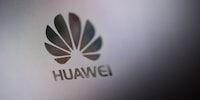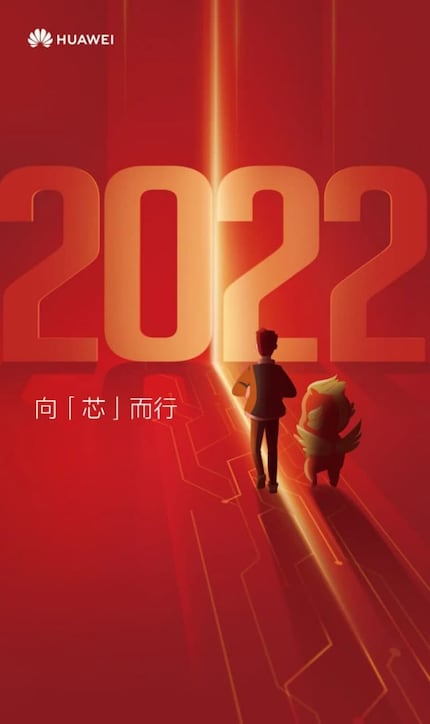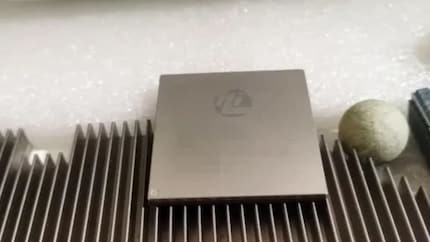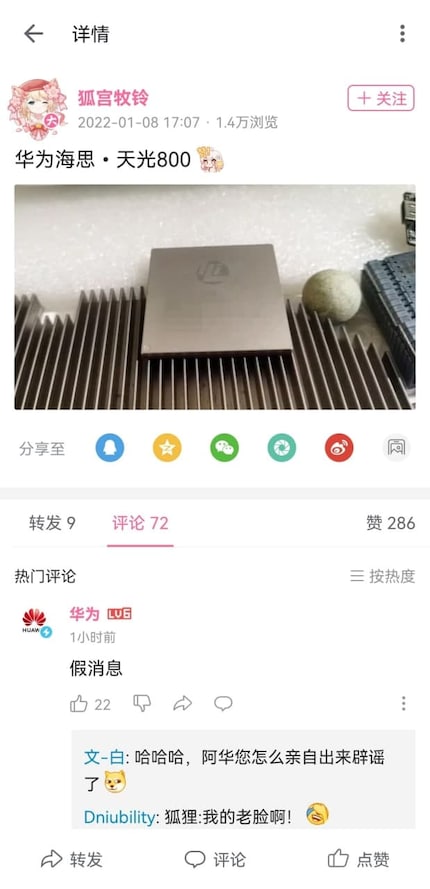
Background information
Huawei vs. USA: The future of the Kirin
by Dominik Bärlocher

A new Huawei chip gets leaked. Nothing unusual about that so far. What’s out of the ordinary is the manufacturer’s reaction. Using just three characters, it has played an absolute blinder.
It’s very rare for manufacturers to react to leaks. But when one tipster claimed to know the details of the new Kirin system-on-a-Chip (SoC), Huawei responded. The short response appears in a comment on the leaker’s post: «假消息». Translation: «fake news».
Responding to leaks as a manufacturer is a delicate issue. There’s a real danger of either revealing too much, or confirming something which isn’t yet ready to be discussed publicly.
It all started with an official teaser posted by Huawei’s subsidiary HiSilicon.

HiSilicon, manufacturer of the Kirin System-on-a-chip, ushers in the new year in the red picture. Under the number 2022 it says «向「芯丨而行», which means «towards the core» in Chinese.
Just a few hours had passed when the following image surfaced on Chinese social media.

The photo was posted on the Chinese social media platform Sina Weibo by tipster 狐宫牧铃, whose name translates to «Fox Palace Shepherd Bell» (although, this is hardly likely to be correct).
Alongside the picture, the chip’s name also came to light: Tianguang 800 or 天光800. This in itself is pretty believable, as Huawei likes making use of terms found in Chinese mythology. Probably the best known example of this is the name of the entire SoC itself: Kirin.
Shortly afterwards, however, Huawei put an end to the rumours around the Tianguang 800 with three Chinese characters. But the end wasn’t clear.
When a manufacturer responds, it releases information. Of course, leaks are disadvantageous – at the end of the day, no manufacturer wants the information to be met with media fanfare. As in Huawei’s case, commenting on the leak itself allows the manufacturer to throw the media a few tasty morsels to pick over. The more comprehensive the answer, the greater the danger of too much information being made public. If Huawei had said «yep, that’s right, the Tianguang is coming out», then the media frenzy would’ve failed to materialise. If they’d said a little more than just «fake news», then we’d have found out something along the lines of «Huawei isn’t working on any chips».

With «假消息», though, Huawei leaves the matter open to interpretation. After all, it’s not really clear which part of the news is supposed to be fake.
With that, Huawei has made a clever move – and won. The media is writing about the reaction to the leak, all the while encouraging speculation about new chips. The company couldn’t have pulled off a better marketing move if it had tried.
Journalist. Author. Hacker. A storyteller searching for boundaries, secrets and taboos – putting the world to paper. Not because I can but because I can’t not.
Interesting facts about products, behind-the-scenes looks at manufacturers and deep-dives on interesting people.
Show all